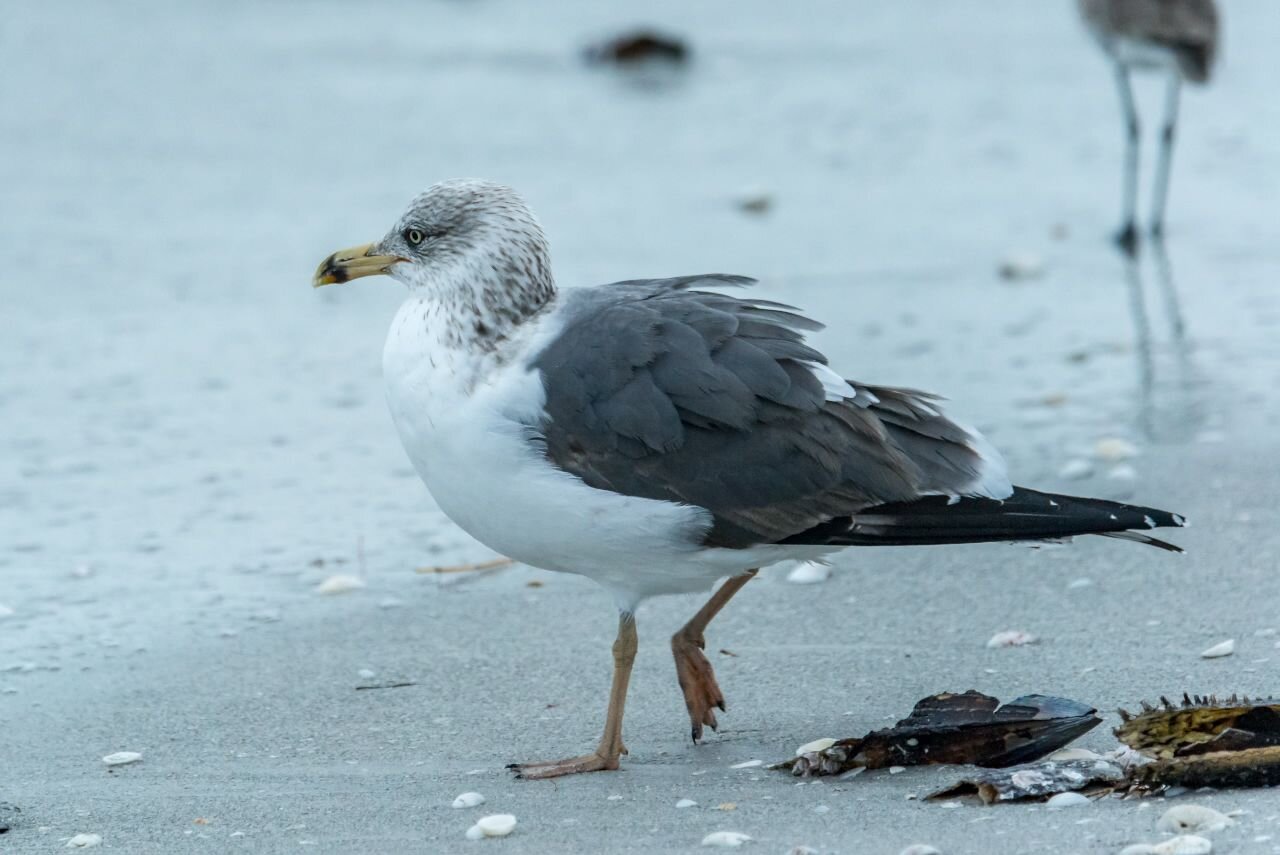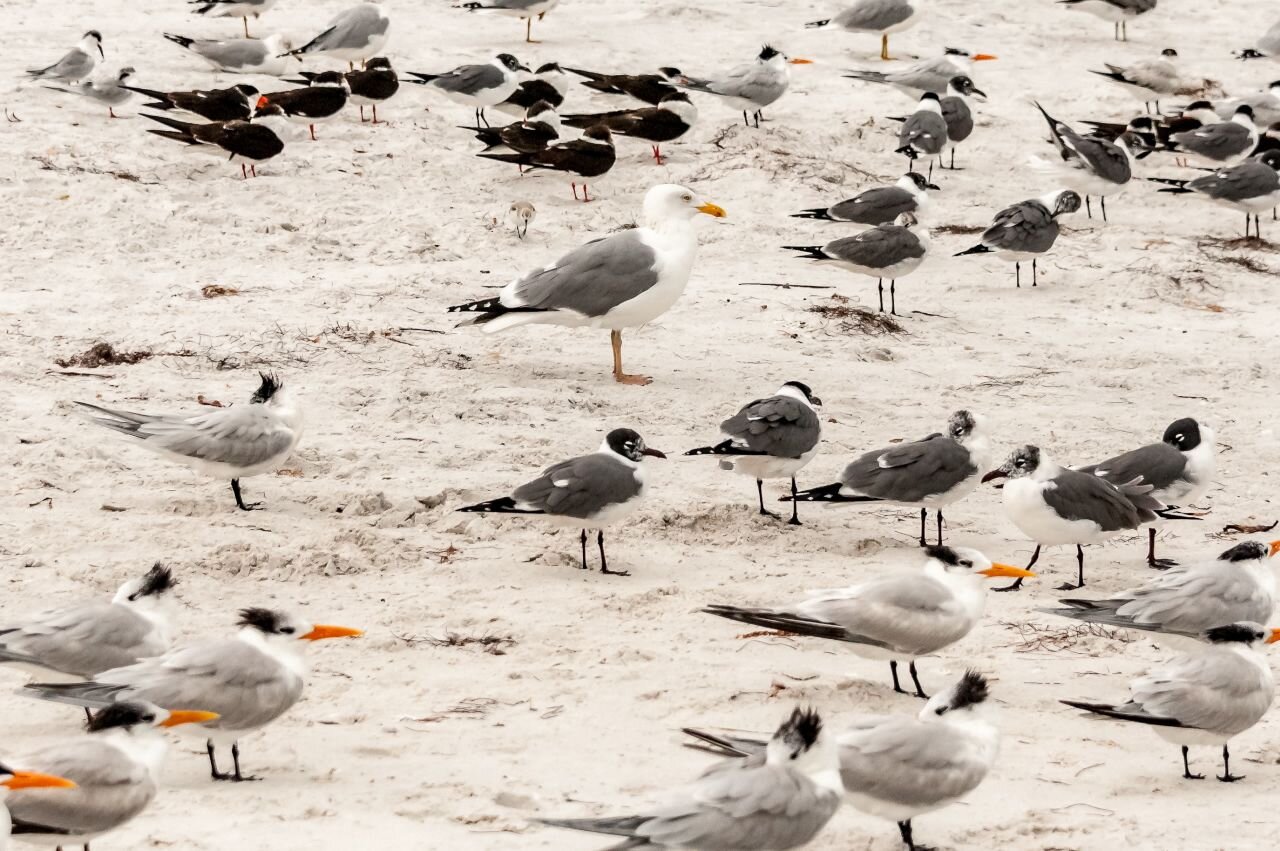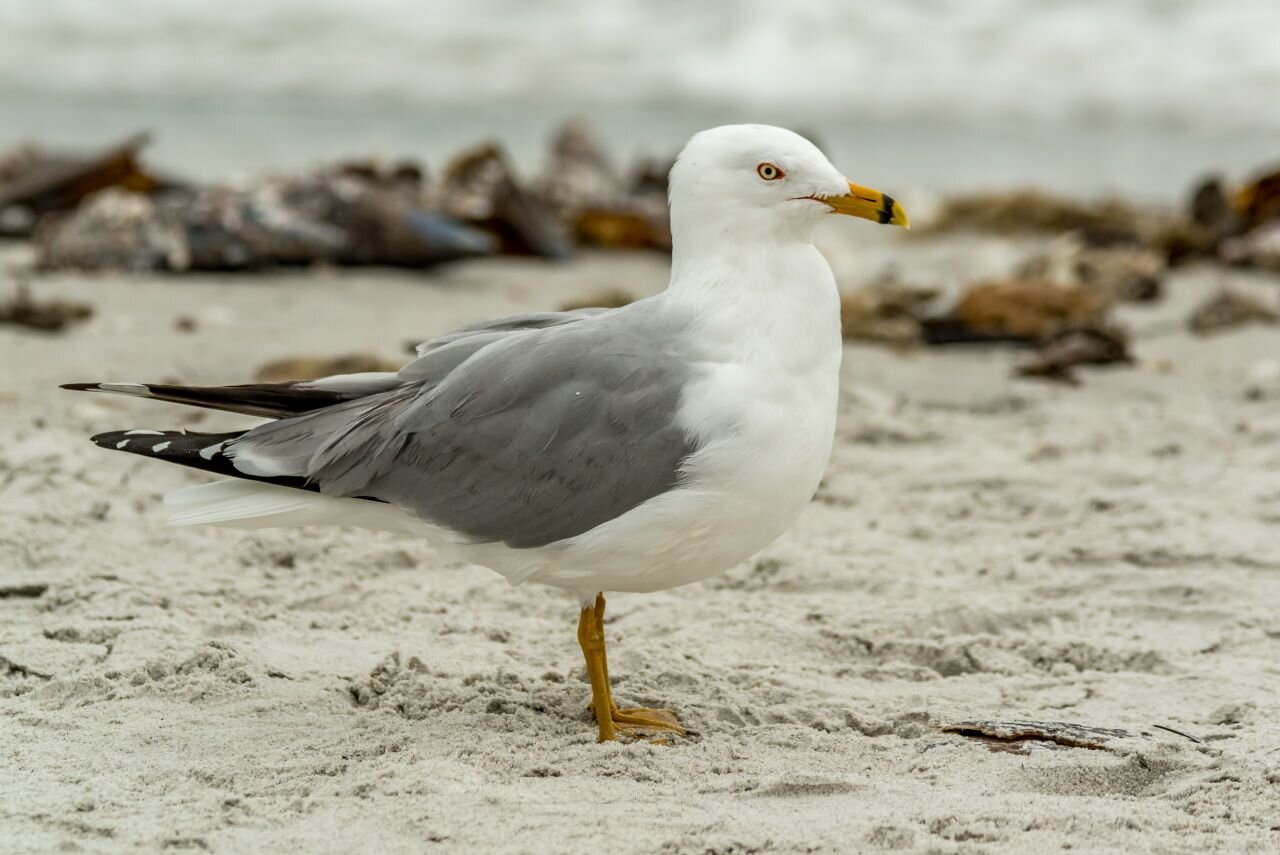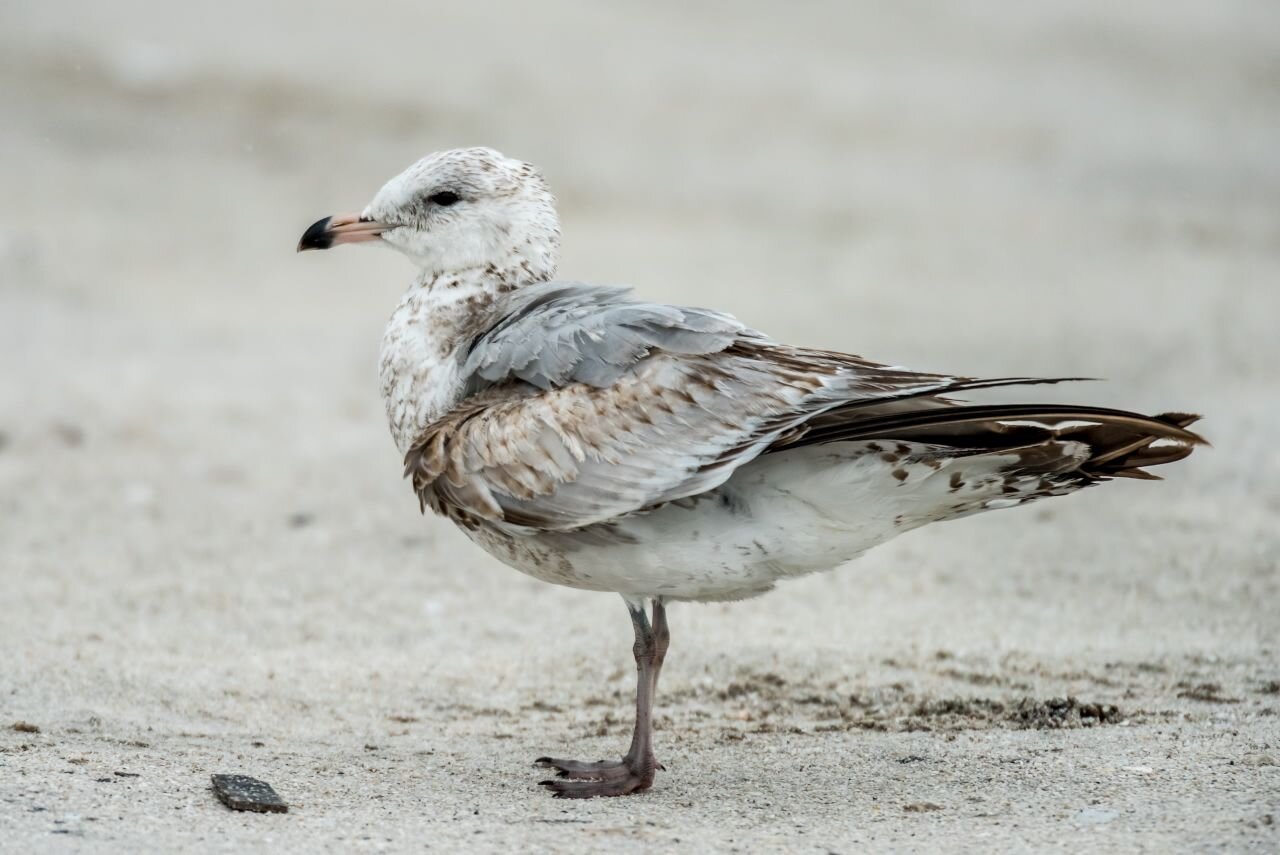Many birders avoid trying to identify all the different gulls they see in large flocks on beaches and around shopping center parking lots. After all, they do seem to come in all different shades of mottled gray, black, and brown, don’t they? Then again, there are birders who take a special interest in gulls and pride themselves on being able to identify as to species and age each individual bird they see. Lesser Black-backed Gulls are a relatively recent addition to our gull birding scene, and it might be well to evaluate them as we prepare for a socially distanced winter that might take us birding to the beaches.
My birding brother, Bob, (see reference below) sent me an article about Lesser Black-backed Gulls concentrating in the winter at Lake Nockamixon State Park in Pennsylvania, where they were banded to learn where and how far they traveled during their migrations and winter wanderings. Lesser Black-backed Gulls are found in the winter at Lake Nockamixon, and concentrate almost exclusively there and at nearby Peace Valley and Green Lane Reservoirs in Pennsylvania and Round Valley and Spruce Run Reservoirs in New Jersey.
Our farm in Pennsylvania is just over a mile from the western end of Lake Nockamixon, five miles from Peace Valley, and 15 miles from Green Lane Reservoir. Both Nockamixon and Green Lane are in the Upper Bucks Christmas Bird Count circle that I compiled for over 20 years before spending our winters in Florida. During those years virtually no Lesser Black-backed Gulls were found on those counts. More recent counts have found close to 200 Lesser Black-backs and seem to be increasing yearly.
Birding friends who bird Lake Nockamixon frequently inform me they have found over 800 Lesser Black-backs there now occurring regularly in the winter. And they are now being found in Florida as well. While they were rare in Florida in the 1970s, they are now being found with increasing regularity, particularly on the west coast of Florida, but occasionally on east coast beaches. All of my photos of Lesser Black-backed Gulls depicted here are from Florida.
Lesser Black-backed Gulls in breeding plumage (Photo 1 and top of page) are quite attractive, with a dark charcoal back, bright yellow legs, red ringed yellow eyes, and a yellow bill with a red gonys spot that chicks know to peck at when begging for food. Like most large gull species, Lesser Black-backs take four years to reach maturity and in their third year (Photo 2) might be confused with Ring-billed Gulls. (Photo 8) But third year Lesser Black-backs are somewhat larger than Ringed-bills, have darker backs and slightly pinkish legs compared to the Ring-billed’s distinctive yellow legs.
When a Lesser Black-backed Gull is surrounded by smaller Laughing Gulls, Black Skimmers, Forster’s and Royal Terns, not to mention a tiny Sanderling, it can look positively regal. (Photo 3) Great Black-backed Gulls (Photo 4) are significantly larger and darker than Lesser Black-backs, and have pinkish-gray legs. Juvenile Great Black-backs (Photo 5) are also larger and have a more mottled black and white body than Lesser Black-backs in any of their plumages.
The gull that Lesser Black-backs are most frequently confused with is the Herring Gull (Photo 6) as it is only slightly larger than the Lesser Black-backed, but has a lighter gray back, and pink legs and feet. However, the juvenile, first year Herring Gull (Photo 7) can be almost indistinguishable from the first-year Lesser Black-backed Gull. (See reference below) Finally, juvenile Ring-billed Gulls (Photo 9) should not pose any identification conflicts with Lesser Black-backs at all.
Yes, gulls can be difficult to identify, particularly, juvenile and immature birds. However, on the east coast of the United States there are only six gull species, and they can be broken down by size. Largest and most distinct is the Great Black-backed which stands out by itself, both as an adult and during its four year maturation. Smaller than Great Black-backs, the Herring Gulls and Lesser Black-backs are pretty close in size, but can be distinguished as noted above.
Lesser Black-backs are only here in the winter, breeding in Greenland and Europe, while Herring Gulls are here year round. Ring-billed Gulls, with a three-year maturation, are smaller than either Herring or Lesser Black-backed; and the final two east coast gull species, both reaching full maturity in two years: Laughing and Bonaparte’s, are significantly smaller than the first four. (photo 3 again) Once a birder becomes completely familiar with all the expected east coast gull species he/she is then ready to start picking through the gull flocks to seek out the rare stray from out west or across the ocean. And if you think gulls are hard to identify, let me suggest you start studying the fall warblers.
In this time of pandemic, while many school children are getting virtual home instruction or opting for home schooling, it may be time for birders to do the hard studying that is necessary to be able to identify and know all those hard to separate species that we all have been meaning to learn for a long time. And home is the place to do it because when the studying gets tough and a serious break is needed, the wine is right close at hand. There may even be a bird’s picture on the bottle if you have the right vintage. Here’s looking at you. Cheers.
References:
My birding brother, Bob, wrote the Forward for the book of early columns, Birding in a Hart Beat, now online here. He also co-conspired with Mary Dodge, webmaster for the SLAS web site and my faithful editor, to produce that book and present it to me as a surprise birthday gift five years ago. Here is the article Bob referred me to: https://www.hawkmountain.org/blog/in-the-field/the-mystery-of-pennsylvanias-lesser-black-backed-gulls
Article about Lesser Black-backed Gulls in Florida in 1974: https://sora.unm.edu/sites/default/files/FFN_02-1-p20-21Woolfenden%5B1%5D.pdf.
For all you wanted to know about Lesser Black-backed Gulls, see: http://larusology.blogspot.com/2010/10/lesser-black-backed-gull-to-z-part-1.html .
For discussion of differences between juvenile Herring and Lesser Black-backed Gulls, see: https://avonbirding.blogspot.com/2016/08/separating-juveniles-herring-lesser.html .
For all you ever wanted to know about gulls and terns in general, see: https://assets.press.princeton.edu/chapters/i13273.pdf









